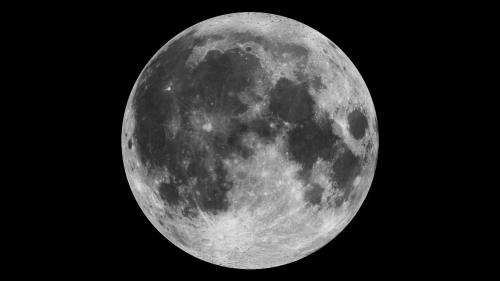Mosaic of the near side of the moon as taken by the Clementine star trackers. The images were taken on March 15, 1994. Credit: NASA
Pennsylvania State University is racing to be the first college on the moon. Since 2011, a team of faculty, researchers, and students has been hatching "Lunar Lion," a robotic spacecraft that is four feet in diameter and weighs 500 pounds. The team hopes that by landing in December 2015 and completing a precise series of tasks, it will win an international competition known as the Google Lunar Xprize.
"What we are doing was once the business of national governments, and now we, a university, are doing this," said Michael Paul, director of space systems initiatives at the university's Applied Research Lab.
The project costs $60 million, and donors have provided more than one-third of that amount. Paul presented an update on the team's work to Penn State's trustees during their meeting Friday afternoon.
Of the 22 teams vying for the prize - the winner gets $20 million - Penn State's is the only university-led group, Paul said in an interview last week. Among the six other U.S. teams competing is one from Astrobotic Technology Inc., a Pittsburgh-based company spun off from Carnegie Mellon University's Robotics Institute in 2008, according to the team's website.
The task for Team Lunar Lion is clearly defined.
"We have to land a spacecraft on the surface of the moon, return high-definition video and images, and move the spacecraft from where it lands to another spot 500 meters away," Paul explained.
If Penn State wins, Paul said, the university will use the money for an endowment to fund research and exploration.
Since 2011, more than 300 students and about 30 faculty members have taken part in the project in a variety of roles, Paul said. The project currently involves 80 students and 12 researchers in six of Penn State's colleges and on four campuses.
To develop a baseline design for the mission, five students went to the NASA Glenn Research Center in Cleveland, where they worked with engineers across many fields. Other students began working on public relations for the project.
"Right now we're preparing for a really big PR campaign in January," said Ajeeth Ibrahim, 23, a graduate student in aerospace engineering.
Ibrahim said the project had opened a world of career choices to him.
The Collegeville, Pa., native said, "I can't imagine having gone through a program like this and not working on something incredibly innovative and game-changing."
Penn State's project is being funded through corporate support, university resources, and donations, Paul said. He told trustees on Friday that the team had made great progress in raising money for the effort, securing $20 million of a targeted $30 million from corporate sponsors.
The project also has brought in $2.5 million in private donations, and the team is seeking $20 million more, he said. The university, which would not disclose the identities of the donors, is providing $8 million.
On its website, the Google Xprize describes itself as the world's largest incentive-based prize. The competition is run by the Xprize Foundation at the request of the Internet giant.
The team is conducting its work in the Applied Research Lab, a secure facility that does work for the Navy. The group is working with fuels and highly technical machinery.
"This is rocket science," Paul said.
The hardest part of the mission, he said, is landing the vehicle on the moon. The Penn State team is studying the best spot for that and the best method of locomotion there.
The team recently paid a $100,000 launch-reservation fee, but is not sure where the craft will depart from.
Once landed, the craft would take panoramic images and feed them to a ground station at Penn State for the world to see, he said.
"I never saw live pictures from the surface of the moon," Paul said. "There are millions and millions of people who never experienced what the baby boomers saw when Neil Armstrong stepped on the moon. But there will be new generations who see what we do."
©2013 The Philadelphia Inquirer
Distributed by MCT Information Services





















